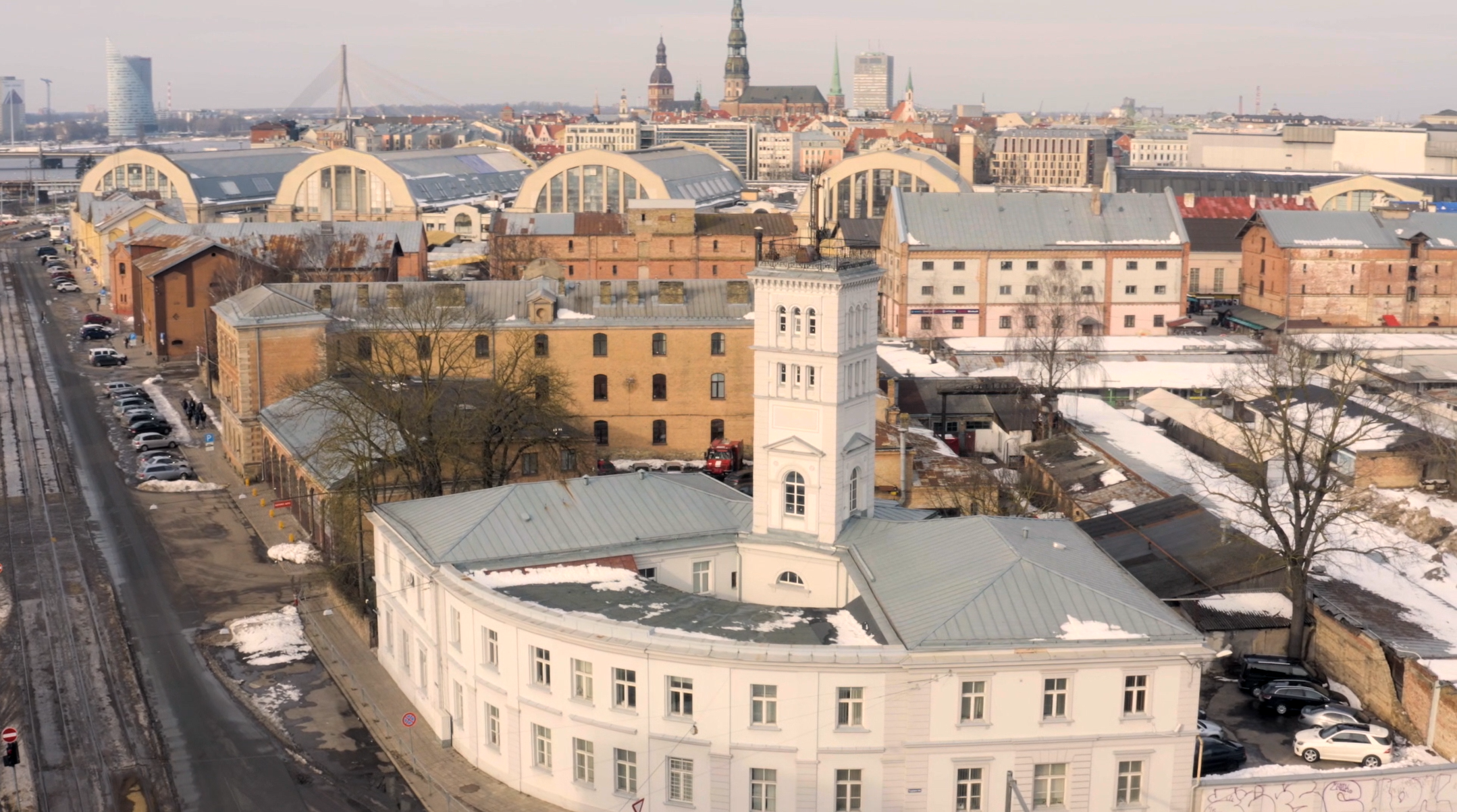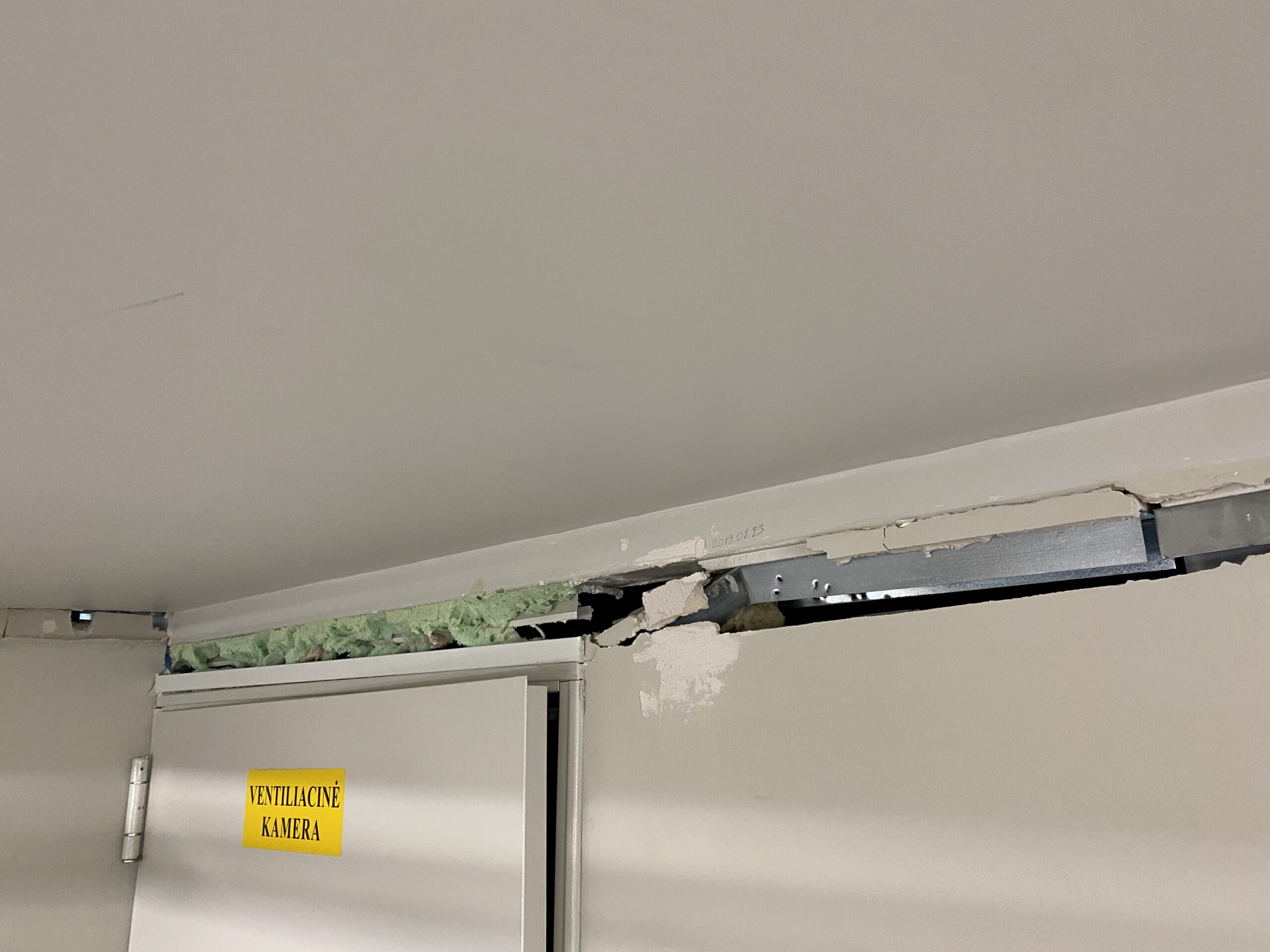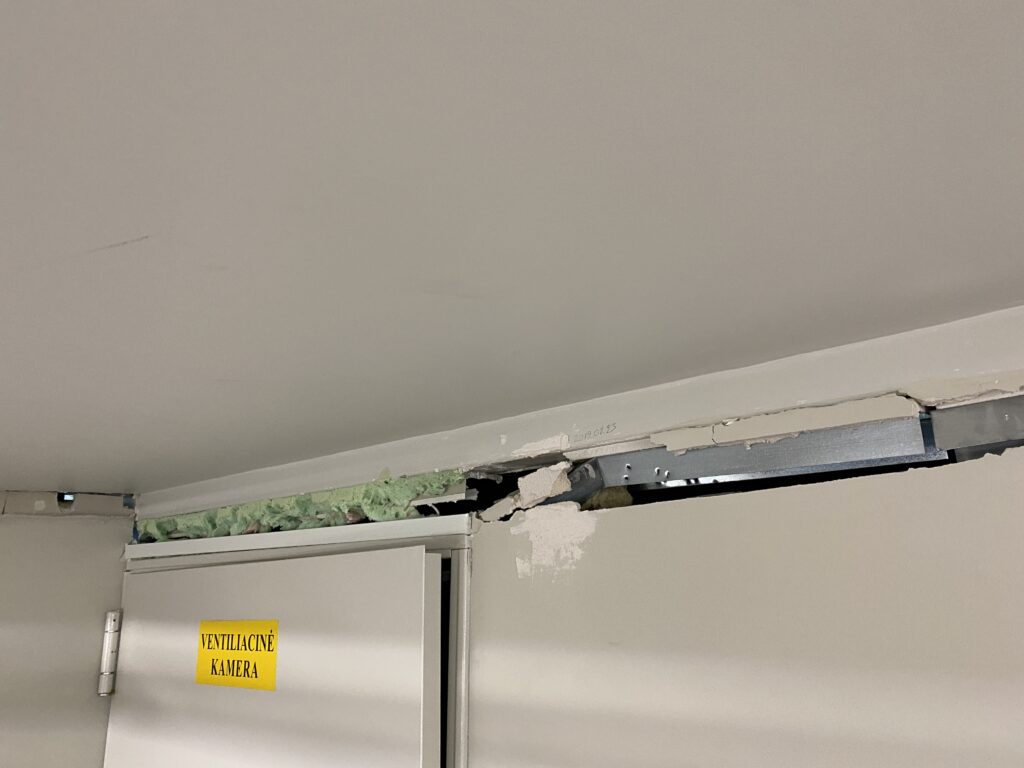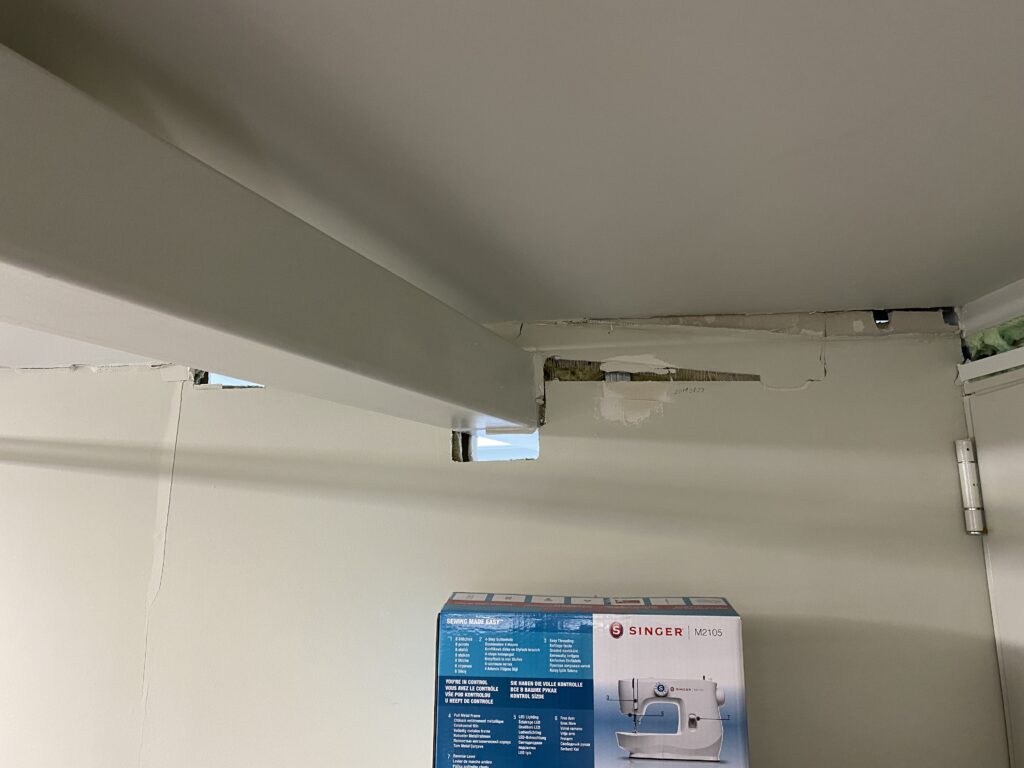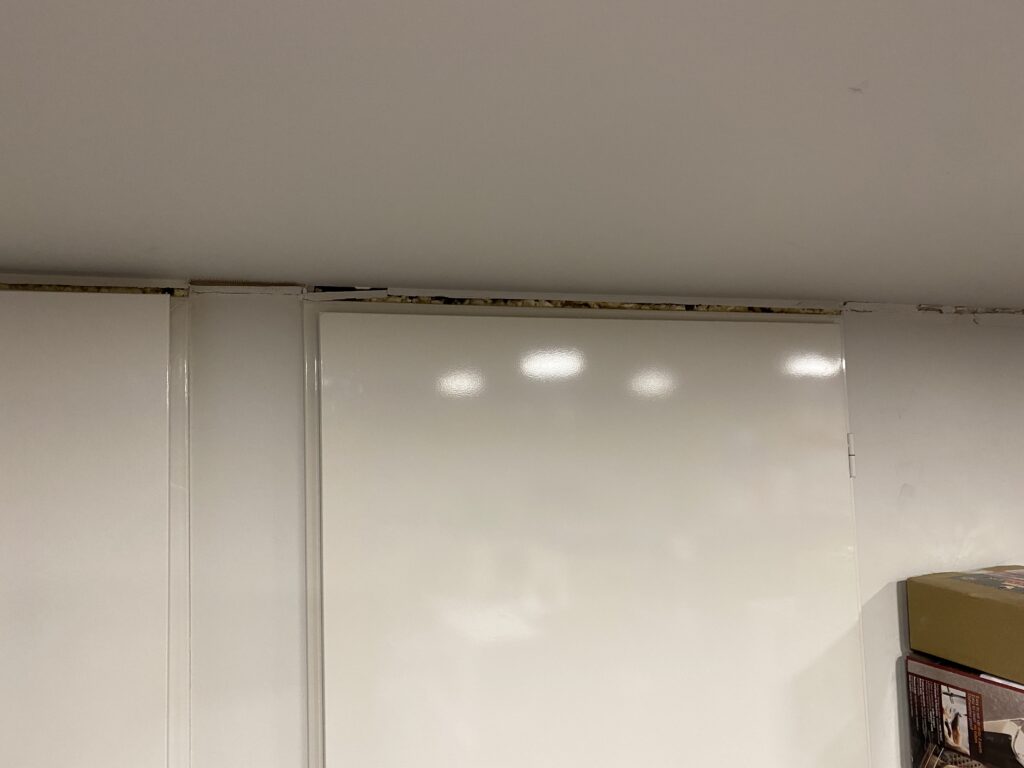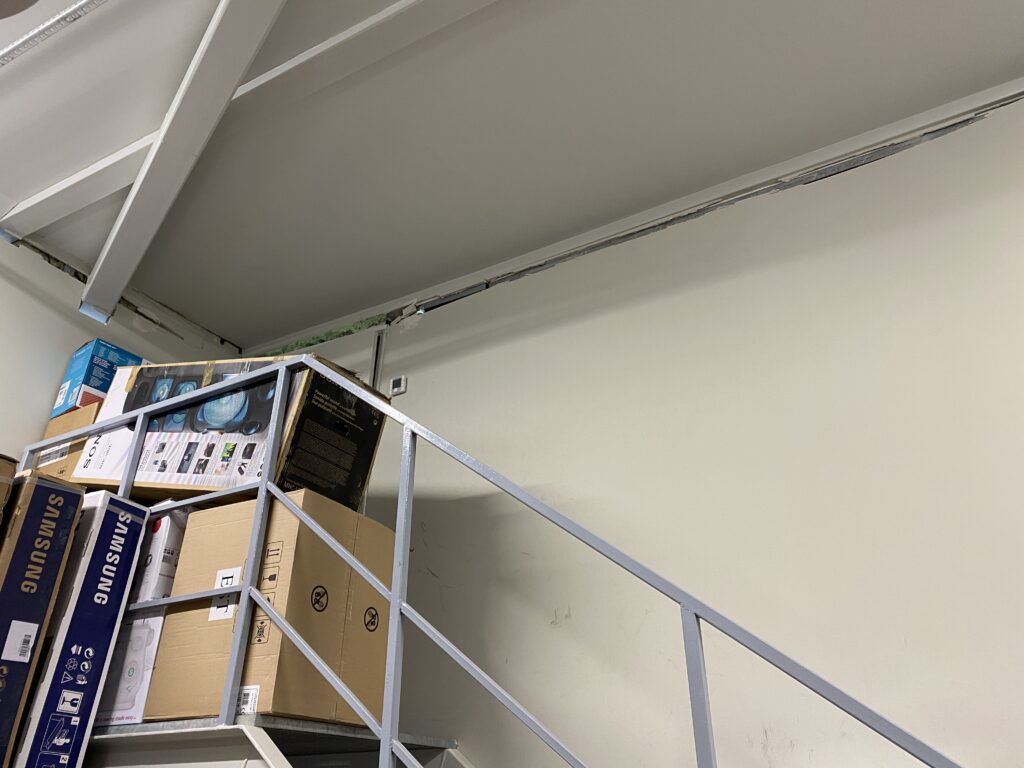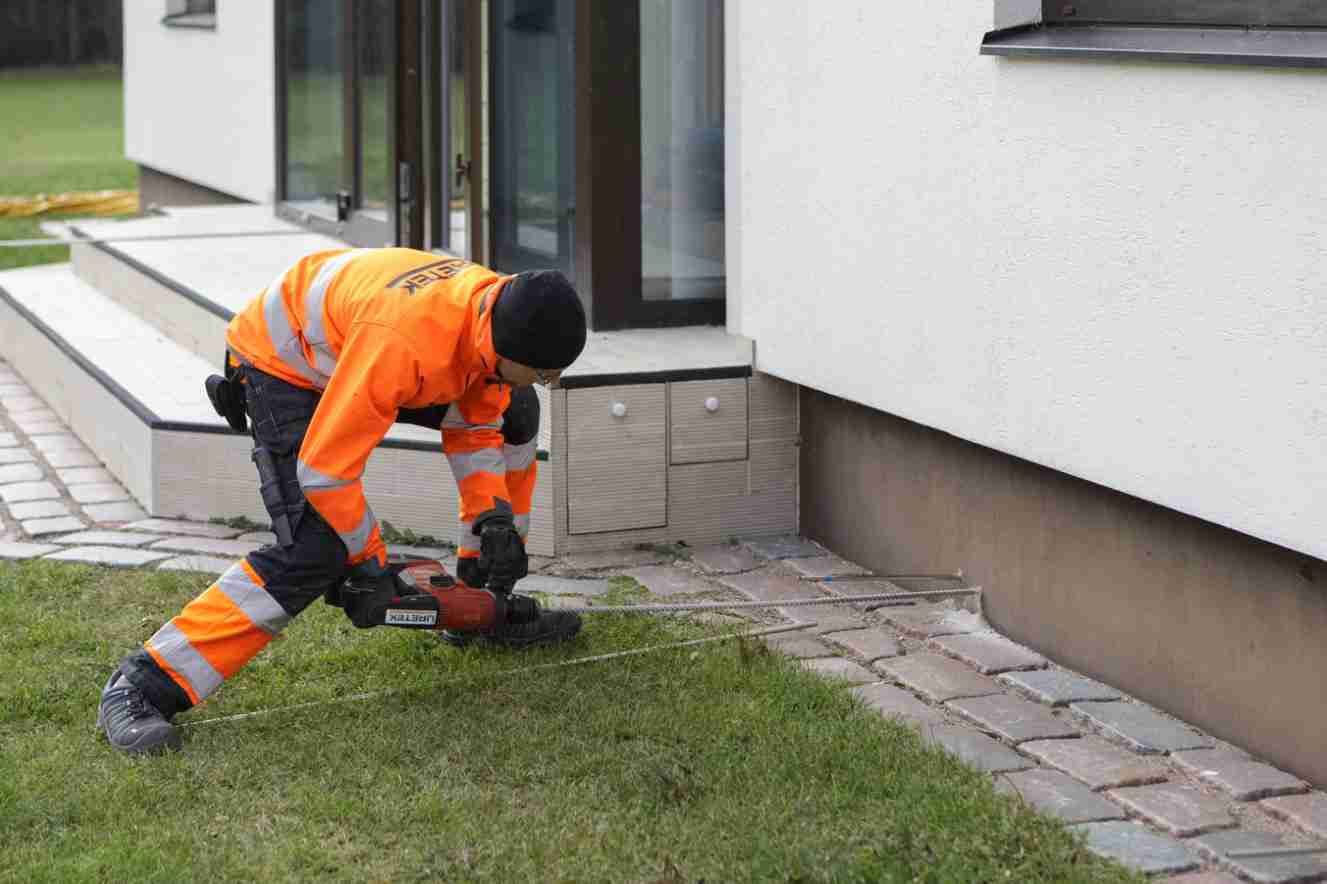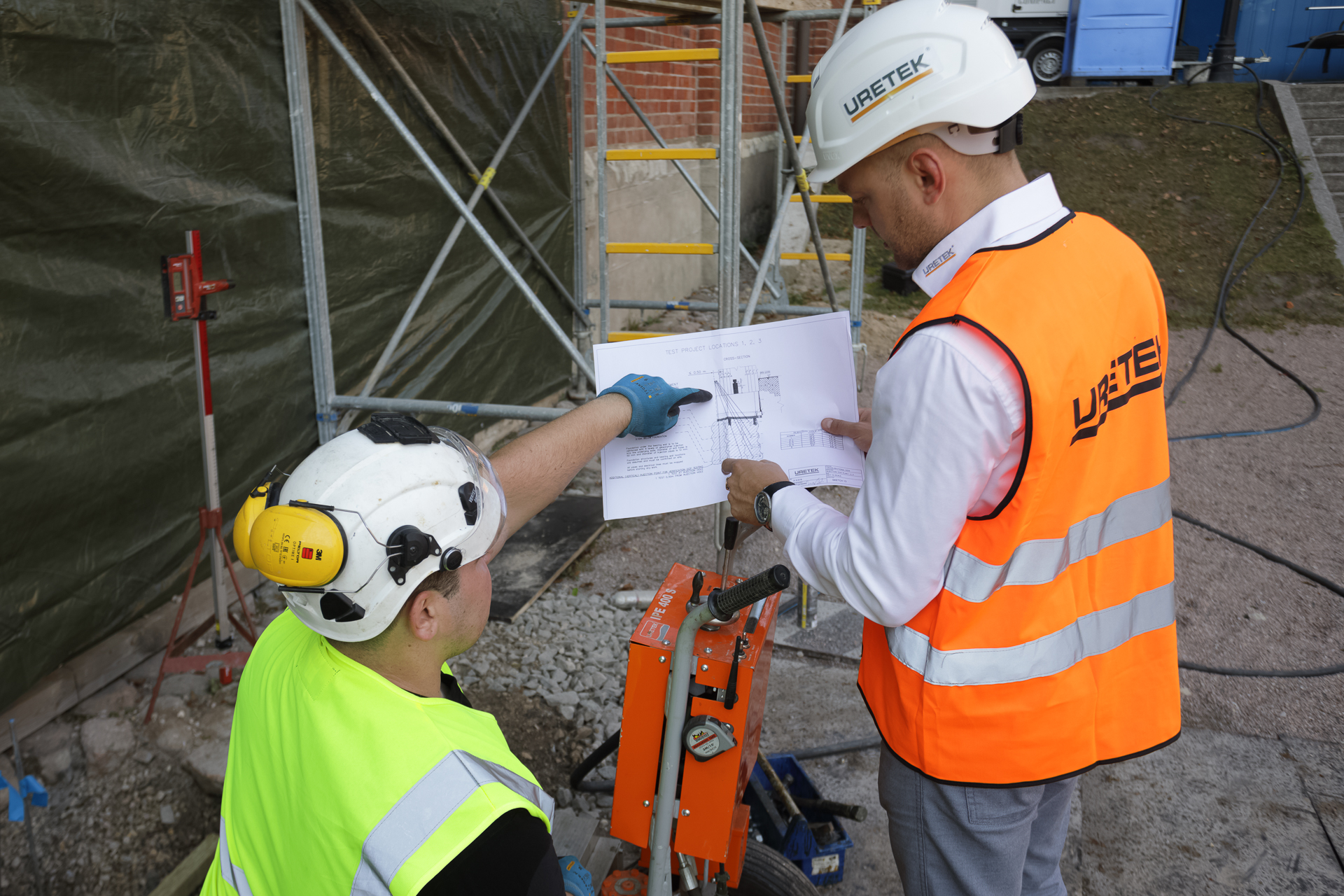geopolymers injection
Electronic shop soil subsidence and compaction
Keywords
Repairing cracks in walls and floors of private houses
Cracks can occur in walls and floor of a house as a result of foundation subsidence due to weakening of subsoil.
In order to eliminate cracks, the reason why they occurred needs to be dealt with first, i.e. strengthen the soil and lift foundation to its designed height. This can be easily done by using URETEK geopolymers injection technology.
Among other things, the condition of a private house depends on the condition of the soil under the building. Foundation exerts pressure on the soil and may therefore gradually sink. The house remains stable as long as subsidence does not exceed permitted limits. If these limits are exceeded and foundation subsidence is uneven, it is necessary to take steps to solve the problem.
In case of foundation subsidence there is a danger of damaging floors, load-bearing and non-load-bearing walls, ceilings and partition walls. These structures may crack, window apertures and doorways may bend, utility lines break, etc. In cases like these, patching cracks in floor and walls is ineffective, because it does not eliminate the reason why they occurred – in many cases it is due to weakening of soil under the structure.
Soil weakening may be caused by irresponsibly performed construction works, e.g. insufficient compaction of soil under the structure. Naturally, there are cases where soil properties are altered because of breakage of water and sewer pipes or underground reservoirs. Weakened soil may also result from changes in surface water level.
Strengthening of soil and stabilisation of foundation
Traditionally, heavy machinery has been used to strengthen the soil under the structure and lift the foundation. Residents had to move out for the time of repairs and extensive earthworks were required to access the foundation. In that case, works performed for strengthening soil and securing foundation take 1–1.5 months.
Now, due to URETEK geopolymers injection method, soil can be strengthened, and foundation lifted with only two to three days. Meanwhile, there is no need for repairs and residents can remain in the building. All works related to geopolymers injection are performed outside the building, around its perimeter or indoors without using heavy machinery.
Geopolymers injection
There are two methods of URETEK geopolymers injection used for eliminating cracks in floors and walls of private houses. Deep Injection method allows lifting the foundation and strengthen the soil at remarkable depth. Meanwhile, Slab Lifting method makes it possible to lift concrete slabs on the ground floor by injecting geopolymer resin directly under the concrete slab, between slab and soil.
After injection, geopolymer resins expand quickly, filling all voids and cavities, strengthening soil and exerting vertical pressure. Resin achieves its final structure and hardens within 15 minutes. If geopolymers are injected in excessively humid soil, they force moisture out and strengthen the soil.
The course of lifting structures and eliminating cracks is monitored by using laser level with only ±1 mm deviation. Injection is performed though technical holes with diameter of 12–16 mm, bored in the concrete floor on the ground floor or in the ground around the building.
Keywords
Stopping subsidence of concrete pools and elimination of cracks
Water level may drop in concrete pools. In hot summer, it is sometimes explained by natural vaporisation. But it may also result from occurrence of cracks in pool structure due to foundation subsidence.
Problem can be solved by using geopolymers injection.
Unlike other structures, pool structure does not prescribe even minimum subsidence of concrete frame. If the pool subsidence has occurred due to insufficient compaction of soil or excess humidity of the soil under the structure, cracking of concrete is inevitable. As a result of cracking, water starts to leak gradually. This, in turn further aggravates the condition of soil around the pool. It may become unsafe and the site cannot be used any more.
When repairing a pool, just patching the cracks is not enough. It does not remove the initial cause of damage. If the cracks occurred due to weakening of soil under the structure and subsidence of pool frame, it is necessary to address the problems with soil and foundation first.
In that case, soil is strengthened before eliminating cracks, foundation lifted and stabilised if necessary. It is worth noting that when using modern URETEK geopolymers injection methods, the work cycle lasts only a day or two and it does not require earthworks or concrete works.
Deep injection
Cracks in concrete pools can be eliminated by using Deep Injection method, which allows filling cavities and voids in the soil under the pool with special geopolymer resins. After reaching the soil, geopolymers expand and harden quickly, exerting vertical pressure. That way it is possible to strengthen weakened and excessively humid soil under the structure.
Furthermore, geopolymers can be used to stop pool subsidence and stabilise its position, or even lift it to its former height where necessary. Due to their structure, geopolymers do not react with water, but force it into surrounding soil. Therefore, geopolymer resins not only strengthen the soil, but also function as waterproofing material.
Cracks in concrete can be patched only after strengthening soil and stabilisation of foundation.
Works algorithm
Geopolymer resins are injected through special holes (diameter of 12–16 mm), drilled in concrete or soil around pool’s perimeter. Holes are quickly closed after completing the injection.
URETEK geopolymer resins are not destructive. They are suitable for strengthening soil, lifting and levelling concrete structures. Everything related to altering the position of concrete frame is monitored in real time by using laser level (precision up to ±1 mm).
Due to their physical and chemical properties, geopolymers remain stable for a long time, including in humid environment. Material is chemically inert, ecologically safe and tested across the world during long term use.

